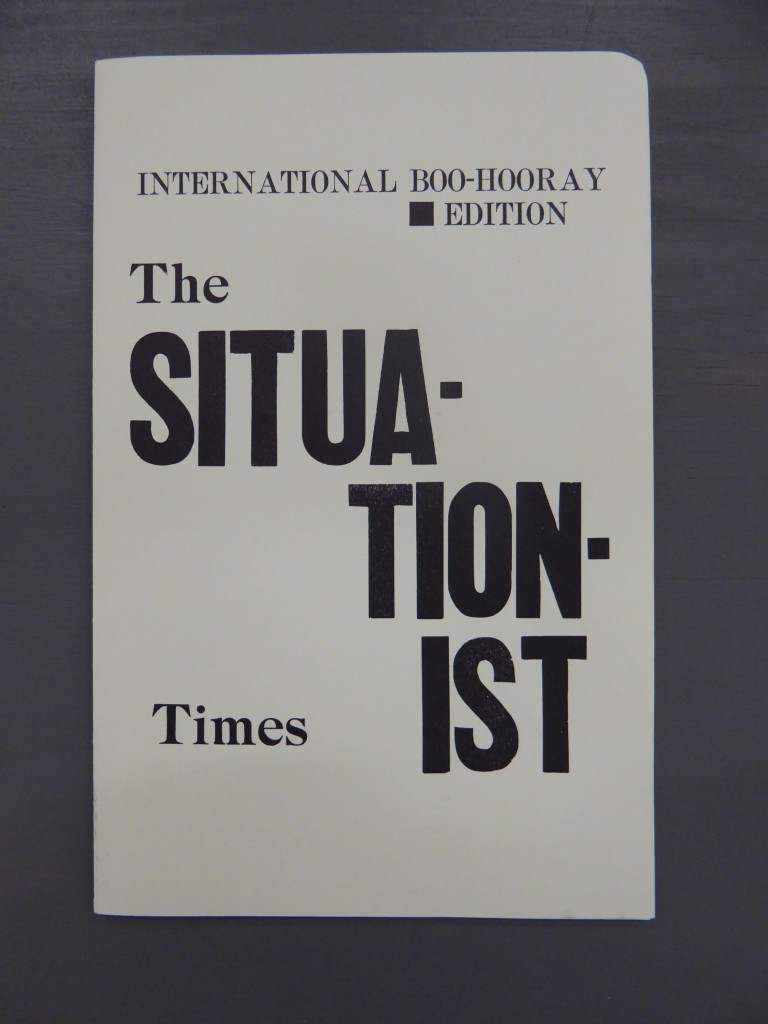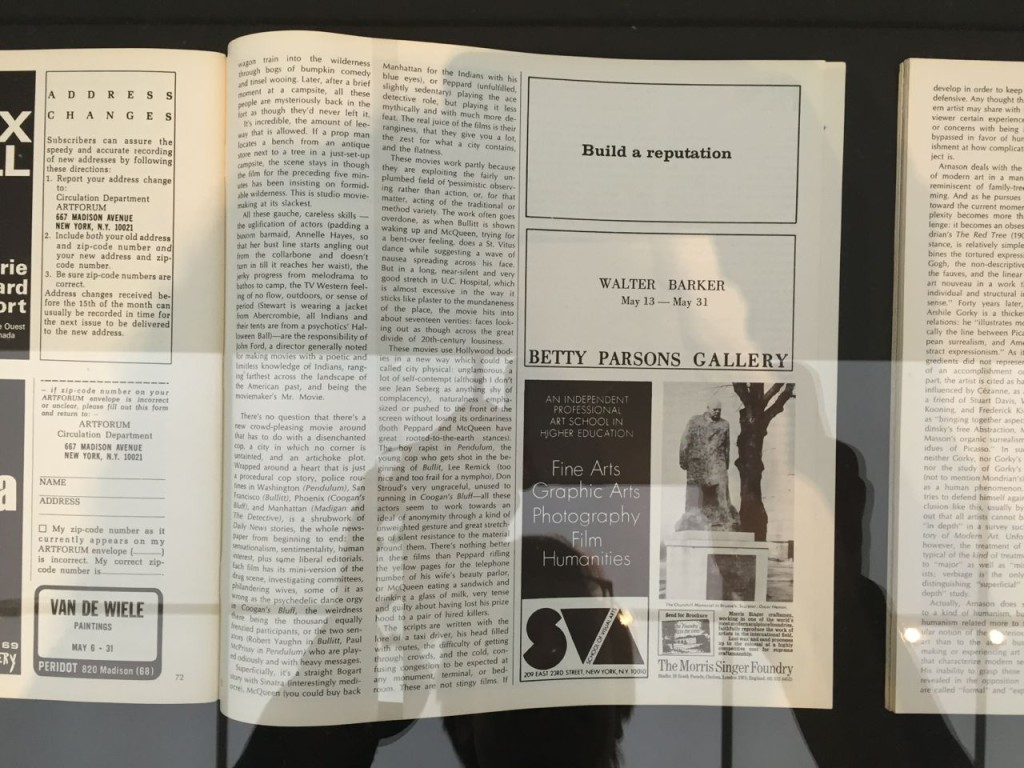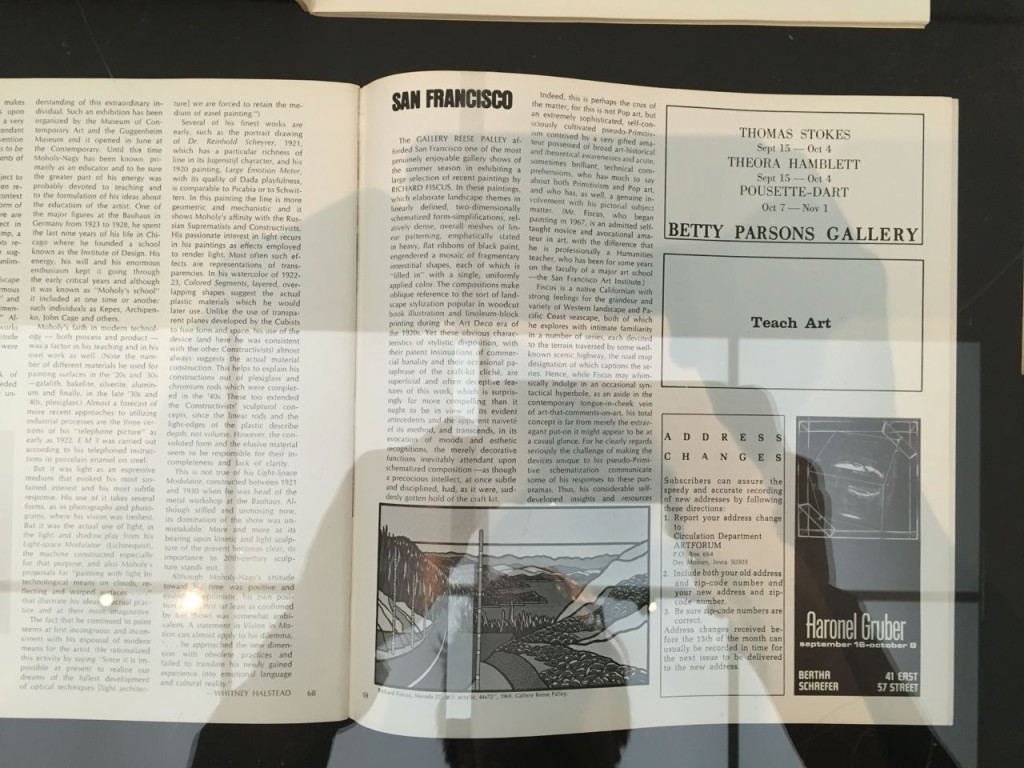


Dies sind besonders schöne Bischofsberger Anzeigen.
Lynda Benglis – Werbeanzeige

Benglis’ Serie von Selbstportraits als Einladungskarten entstand in den frühen 1970er Jahre. Sie hinterfragt darin die traditionelle Rollenverteilung und kritisiert vorherrschende Geschlechtsstereotypen.
Die erste Arbeit der Serie war eine Einladungskarte für eine Ausstellung im Clocktower 1973 und ist ein Kindheitsportrait der Künstlerin griechisch-amerikanischer Herkunft: es zeigt die junge Benglis, bekleidet mit der Nationaljacke junger Männer Griechenlands. Mit der Wahl de Archivbildes propagiert sie, durch das Widerlegen der Existenz von geschlechtsspezifischer Bekleidung, die Auflösung vorherrschenden Stereotypen.
Die zweite Einladung für eine Ausstellung in der Paula Cooper Galerie, gedruckt im April 1974 in Artforum, zeigt die Künstlerin mit Pilotenbrille und in einer übertrieben männlichen Pose an einen Porsche gelehnt. Auch in dieser Ausgabe erschien die Werbeanzeige von Robert Morris für die Ausstellung in der Castelli-Sonnabend Galerie. Durch die Feinabstimmung der Details beider Werbeanzeigen, wie beispielsweise das tragen von Pilotenbrillen oder die überdeutliche Darstellung maskuliner Eigenschaften, entsteht der Eindruck, Benglis parodiert die Anzeige Morris noch in der selben Artforum-Ausgabe.
Für die dritte Einladungskarte inszeniert sich die Künstlerin in Anlehnung an Betty Grables Cheeskake Pin-Up aus dem Jahre 1940, fotografiert von Annie Leibowitz. Als vierte Arbeit folgte sechs Monate später die Werbeanzeige in Artforum.
Lynda Benglis – Werbeanzeige. Werbeanzeige für ihre Ausstellung in der Paula Cooper Galerie in New York Foto: Arthur Gordon. Publiziert in Artforum, November 1974, Vol. 13, Nr. 3, S. 3-4, Offsetdruck, 26.7 x 53 cm
Quelle: Stefanie Thommen
StarShip




I like this magazine
Brand-New-Life, a magazine


Brand-New-Life is a magazine for art criticism. The magazine offers polyphonic perspectives on contemporary art and its political and social contexts. Our goal is to encourage pointed and analytical comments about art. In Brand-New-Life artistic, journalistic and academic approaches complement each other and create a critical voice for Switzerland that takes up international debates.
The Situationist Times


Anonymous user comment: “I was initially drawn to this by the typographical design and also because of my general interest in Situationism. It was therefore a pleasant surprise on opening the pamphlet to discover a woman member of the Situationists who I had not heard of before – Jacqueline de Jong.”
Wikipedia says this about her:
She joined the Situationist International in 1960, and started to participate in conferences and the Central committee. After the expulsion of Constant Nieuwenhuys and his group, she became the Dutch Section of the organization. She did not accept the way the German section, also known as Gruppe SPUR, had been expelled and resigned. The cleft between the Debordists and the Second Situationist International grew, however she refused to join either faction, instead stating that people should act as situationists. Between 1962 and 1968 she edited and published the The Situationist Times involving Gaston Bachelard, Roberto Matta, Wifredo Lam and Jacques Prévert in this project. In 1968 she was in Paris, printing and distributing revolutionary posters.
Brand-New-Life


Stephen Kaltenbach, Artforum Advertisements, November 1968-December 1969










“Stephen Kaltenbach placed a series of advertisements in twelve consecutive issues of Artforum from November 1968 to December 1969 in order to circulate his “micro-manifestos,” consisting of pithy and ironic phrases such as “Art Works,” “Build a Reputation,” and “Become a Legend,”, that foregrounded the role of the art magazine in careerism and promotion.”
Gwen Allen, Artists’ Magazines: An Alternative Space for Art, The MIT Press 2015, p.39
 follow
follow